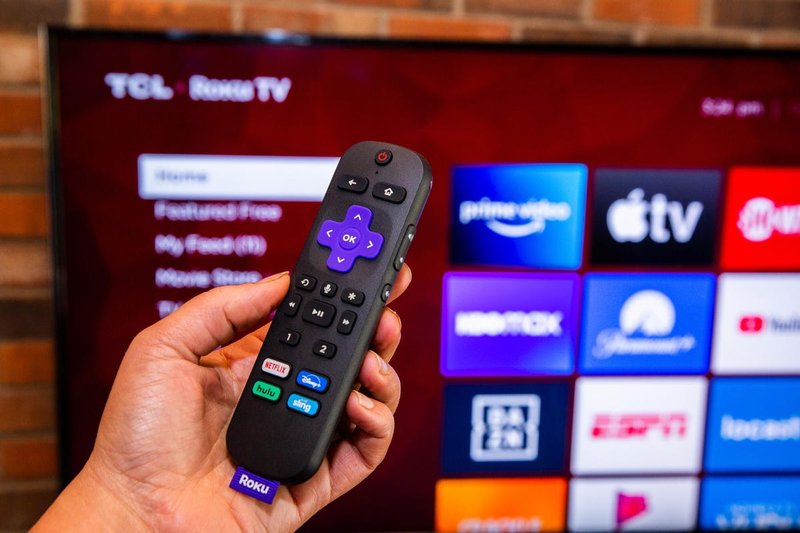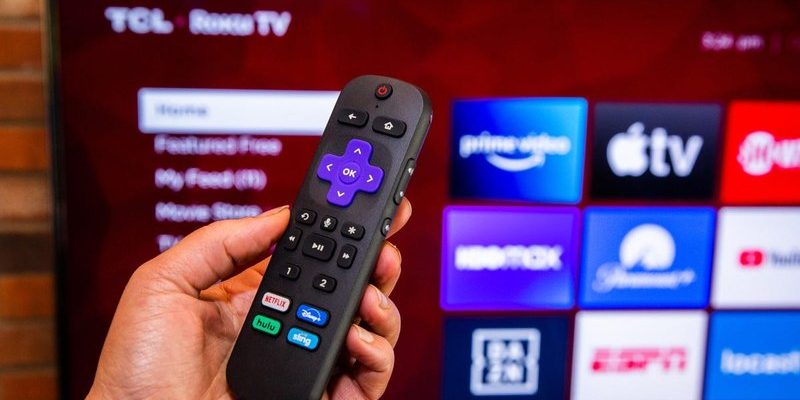
A lot of us land in what I call “remote chaos”—maybe you moved, your remote quit for good, or you want fewer gadgets on your coffee table. I totally get it. But when it comes to Amazon Fire TV remotes and Roku TVs, the relationship is, well, complicated. Not soulmates, more like distant cousins who only see each other at family reunions. Let’s walk through why these remotes aren’t as ready to swap teams as you might hope—and what your real options are.
Understanding How Streaming Device Remotes Work
Here’s the thing: not all remotes speak the same “language.” Imagine trying to order sushi in a French restaurant—it’s not gonna land. Roku TV remotes and Amazon Fire TV remotes each use their own special codes, just like different dialects. Most Roku TV remotes use a mix of infrared (IR) signals and wireless communication (RF or WiFi Direct), depending on model. Fire TV remotes lean into Bluetooth—yup, it’s the same tech that connects your wireless headphones.
So, even though both devices look like typical clickers with basic buttons, what’s happening under the hood is totally different. If you try to “pair” or “sync” an Amazon Fire TV remote with a Roku TV, nothing happens. No magic handshake, no lights blinking in agreement. If you’ve ever wondered why your friend’s universal remote works on everything but your setup, it’s often because of these deeper compatibility issues.
Honestly, it’s a bit like trying to use an Xbox controller on a PlayStation. The buttons feel familiar, but the system just shrugs at you. Technology’s great… until it isn’t.
Are There Any Workarounds or Hacks?
I know what you’re thinking: “Is there a trick? Maybe a code, a reset, or sneaky workaround?” Trust me, I’ve been down that rabbit hole. Sadly, Amazon Fire TV remotes can’t natively control Roku TVs—not even with some clever syncing or resetting. Manufacturers design these remotes to pair only with their own devices. There’s simply no built-in code that makes a Fire TV remote talk to a Roku TV.
Now, some folks try elaborate workarounds, like programming universal remotes or using HDMI-CEC (a feature that lets your TV and connected gadgets chat a little), but here’s the rub: Roku TVs don’t listen for Fire TV remote signals over HDMI, and vice versa. And unless your Fire TV remote has an IR blaster (most don’t), it can’t blast out the simple signals a Roku TV would understand.
If you’re really in a pinch and desperate, universal remotes or smartphone apps come to the rescue. More on that soon.
Why Don’t Brands Make Remotes That Work With Each Other?
Wouldn’t life be easier if every remote just worked with every device? I think about this every time I dig through my couch cushions. But here’s why it isn’t that simple: brands want you in their “ecosystem.” Amazon wants you to use its Fire TV products (and buy more Alexa stuff), while Roku wants to keep you a loyal Roku-er.
From a technical angle, the protocols—those sets of instructions or “codes” each device uses—are locked down. Amazon’s remotes are coded to pair and control only Fire TV sticks, cubes, and such. Same goes for Roku. Even when you try to “pair” or “sync” a remote, the process checks for a matching code. No match? No control.
There’s also a practical reason: if remotes were too compatible, it would be way too easy for accidental button presses (or your neighbor’s remote) to mess up your settings. Hardware companies actually design for a little “incompatibility” for your own sanity.
Universal Remotes: Are They a Solution for Roku TV and Fire TV?
Let me explain what a universal remote is, just in case you’re new to this world. It’s a single clicker that promises to wrangle all your gadgets—TVs, soundbars, streaming boxes—if you enter the right code. Some universal remotes have massive codebooks that support both Roku TVs and Fire TV devices. The magic trick is that these remotes can “learn” the signals for whatever device you’re targeting.
If you want one device controlling both your Roku TV and an Amazon Fire TV Stick (or cube), this is your best bet. People often go wild with these advanced clickers, setting up all sorts of automation. Beware, though: setup can be…an adventure. You’ll spend a solid half hour flipping through manuals, entering codes, and doing some trial and error. And sure, a universal remote isn’t as sleek or simple as a dedicated brand remote, but it does save you from juggling a pile of plastic.
- Universal remotes from brands like Logitech, GE, or Inteset usually support Roku TVs (using IR codes) and can sometimes operate Fire TV (limited features, IR only).
- For voice search and advanced functions (think: Alexa or private listening), you’ll still need the original remote or a smartphone app.
Using Smartphone Apps as a Remote Alternative
Honestly, this is my favorite hack for when remotes go missing or break. Both Roku and Amazon offer official mobile apps you can download to your phone or tablet. These apps mimic the layout of the physical remote, but on your screen. For Roku TVs, the Roku app lets you tap to navigate and even type out searches (way faster than arrow keys). Same vibe with Fire TV and the Amazon Fire TV app.
Here’s the catch: both devices need to be on the same Wi-Fi network as your phone for the app remote to work. If the TV is powered off or disconnected from Wi-Fi, the app can’t find it.
It’s worth noting, though, that these apps are brand-specific. The Roku app doesn’t control Fire TV, and vice versa. But if you need a quick fix while waiting for a replacement remote in the mail, or you lose remotes more often than your car keys, this option is a lifesaver.
If you’re looking for a simple, zero-cost solution, app remotes almost always save the day—especially if you’re just trying to change the channel or bump up the volume.
Pairing and Troubleshooting: What Actually Works?
Okay, you might be wondering about all those “pair” and “reset” tricks you’ve seen online. Here’s the truth: if you try to pair an Amazon Fire TV remote with a Roku TV, it just doesn’t work. The devices won’t recognize each other, no matter how many times you press and hold buttons or take out the batteries. There’s no secret code, no pairing wizard—zilch.
But let’s say your original Roku TV remote isn’t responding. Usually, the first thing to try is a battery swap (sometimes it’s *that* simple). If it still doesn’t work, Roku remotes can be re-paired to the TV. There’s often a tiny “pairing” button in the battery compartment you hold until the light flashes. For Fire TV remotes, similar steps pair them with Fire sticks or cubes, never with Roku TVs.
If everything fails, check for interference (other wireless devices, thick walls, or even too much sunlight can mess with IR signals). Sometimes a full reset of the TV or streaming device helps, but don’t expect miracles if the hardware just isn’t compatible.
Comparing the Features: Roku TV Remote vs. Amazon Fire TV Remote
Lining up these remotes side by side, you’ll spot a few things. Roku TV remotes are usually pretty straightforward—directional pad, home, back, volume, and shortcut keys to popular streaming apps. Some have voice controls, but not all.
Amazon Fire TV remotes, on the other hand, tend to lean into smart features. The newest models sport Alexa voice control, microphone buttons, and even TV power/volume controls (on select versions). They’re also built around Bluetooth, so you don’t have to point them directly at the TV, which is great if you’re a serial couch lounger.
But compatibility? Not so much. These features sound awesome, but you can’t swap the remotes and expect them to work. The “code” that lets you sync, pair, and control is completely locked to each brand.
Buying Replacement Remotes: What Should You Look For?
If you’re fed up with the old remote or it’s hopelessly lost, shopping for a replacement can be confusing. Should you go official or generic? Here’s what works:
- Official remotes from Roku or Amazon guarantee compatibility, and setup is usually painless. Just unbox, add batteries, and follow pairing instructions.
- Third-party remotes can be cheaper but do your homework. Read reviews and make sure they specifically say “Roku TV” or “Fire TV” on the listing—otherwise, you risk getting a paperweight.
- Universal remotes are great if you like tinkering and want one device for everything. But, as mentioned earlier, setup can require some patience.
Watch out for remotes labeled “Roku player only” (won’t control Roku TVs) and vice versa. Double-check which type of remote matches your TV’s model, whether it uses IR or WiFi Direct, and whether you need voice functions.
Final Thoughts: Keeping Your Streaming Setup Simple
So, are Amazon Fire streaming device remotes compatible with Roku TVs? Plainly put, they’re not. These remotes work like two different keys for two different locks—no matter how much you want them to fit, they just won’t. If you’re stuck without your original remote, universal models or app remotes are your best solutions.
I know, it can feel like a hassle at first, but with the right replacement, you’ll be back to binge-watching in no time. In the end, sticking to the remote that matches your device saves frustration (and keeps your living room arguments to a minimum). And if all else fails, just remember: your phone is secretly the best backup remote you never knew you had. Happy streaming!
